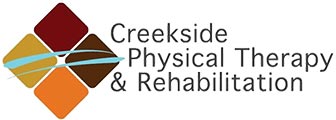 Turf toe is a sprain of the ligaments around the joint of the big toe. It commonly happens to athletes such as football or soccer players who play on artificial turf. It can also happen to those who wrestle, do gymnastics, and dance. The injury happens suddenly when the athlete loses traction on the turf or other surface and hyperextends their big toe joint. There are a variety of physical therapy treatments available that can help with turf toe and getting the athlete back on their feet as soon as possible.
Turf toe is a sprain of the ligaments around the joint of the big toe. It commonly happens to athletes such as football or soccer players who play on artificial turf. It can also happen to those who wrestle, do gymnastics, and dance. The injury happens suddenly when the athlete loses traction on the turf or other surface and hyperextends their big toe joint. There are a variety of physical therapy treatments available that can help with turf toe and getting the athlete back on their feet as soon as possible.
Common Turf Toe Symptoms
When a turf toe injury happens, the athlete often hears a popping sound and feels immediate pain. Some other common symptoms of turf toe include:
- Swelling
- Bruising
- Limited joint movement at the base of the big toe
- Tender to the touch
- Cramp in the arch of the foot
- Pain when bearing weight on the toe
- Dislocated toe joint
If the turf toe is caused by a repetitive injury, the symptoms can develop gradually over time and get worse. If the injury happens suddenly, pain is instant and can continue to worsen over time.
Diagnosing Turf Toe
Turf toe is a sprain of the metatarsophalangeal joint (MTP) or the main joint of the big toe. When injured, this causes damage to the plantar complex. Turf toe can be categorized into three injury grades based on the severity of the injury:
- Grade 1. Overstretching of the plantar complex
- Grade 2. Partial tear of the plantar complex
- Grade 3. Complete tear of the plantar complex
To diagnose turf toe, a practitioner will conduct a physical exam, and the athlete may be asked questions about the injury and symptoms. A doctor may recommend seeing a physical therapist for treatment, who will do the following during an exam:
- Check the movement of the toe
- Assess the function of the muscle
- Check for swelling and tenderness
- Analyze gait if able to walk
If the case is severe, imaging tests such as an X-ray or MRI may be ordered to further check the injury for damage to the bones or joints.
Turf Toe Treatment Options
Turf toe treatment is based on the grade of the injury. For less severe injuries, the following treatments may be recommended immediately after hurting the toe to help reduce swelling and pain:
- Protection
- Rest
- Ice
- Compression
- Elevation
Some turf toe injuries may require wearing a special boot to stabilize the foot while recovering, and more severe cases may require surgery.
A physical therapist can create a custom treatment plan based on the person’s individual needs. Factors such as the sport being played, lifestyle, and specific goals will be taken into consideration when creating a plan. The goal of treatment is to reduce pain, swelling, and stiffness in the toe joint. The length of physical therapy can vary from person to person and can range from weeks to a year. Physical therapy treatment may include:
- Taping
- Ultrasound or laser therapy
- Cupping or dry needling
- Exercises designed to restore motion, strength, and stability
Turf toe may result in long-term pain or stiffness in your toe joint. Following the physical therapy plan as recommended can help prevent or reduce your risk of future complications.
Preventing Turf Toe
Many sports injuries such as turf toe happen suddenly and are difficult to prevent. There are some things you can do to reduce your risk of turf toe, such as:
- Wear proper footwear for the sport you are participating in
- Use orthotics if your shoe does not fit properly or needs additional support
- Stretch before and after any activity
- Strength train to build endurance and stability
Contact Us With Questions
If you have a sports injury such as turf toe and need treatment, contact Creekside Physical Therapy & Rehabilitation. Our physical therapy clinic in Oregon can help create a custom treatment plan based on your needs and goals. To set up an appointment, complete our contact form or call us at 503-245-5710.
